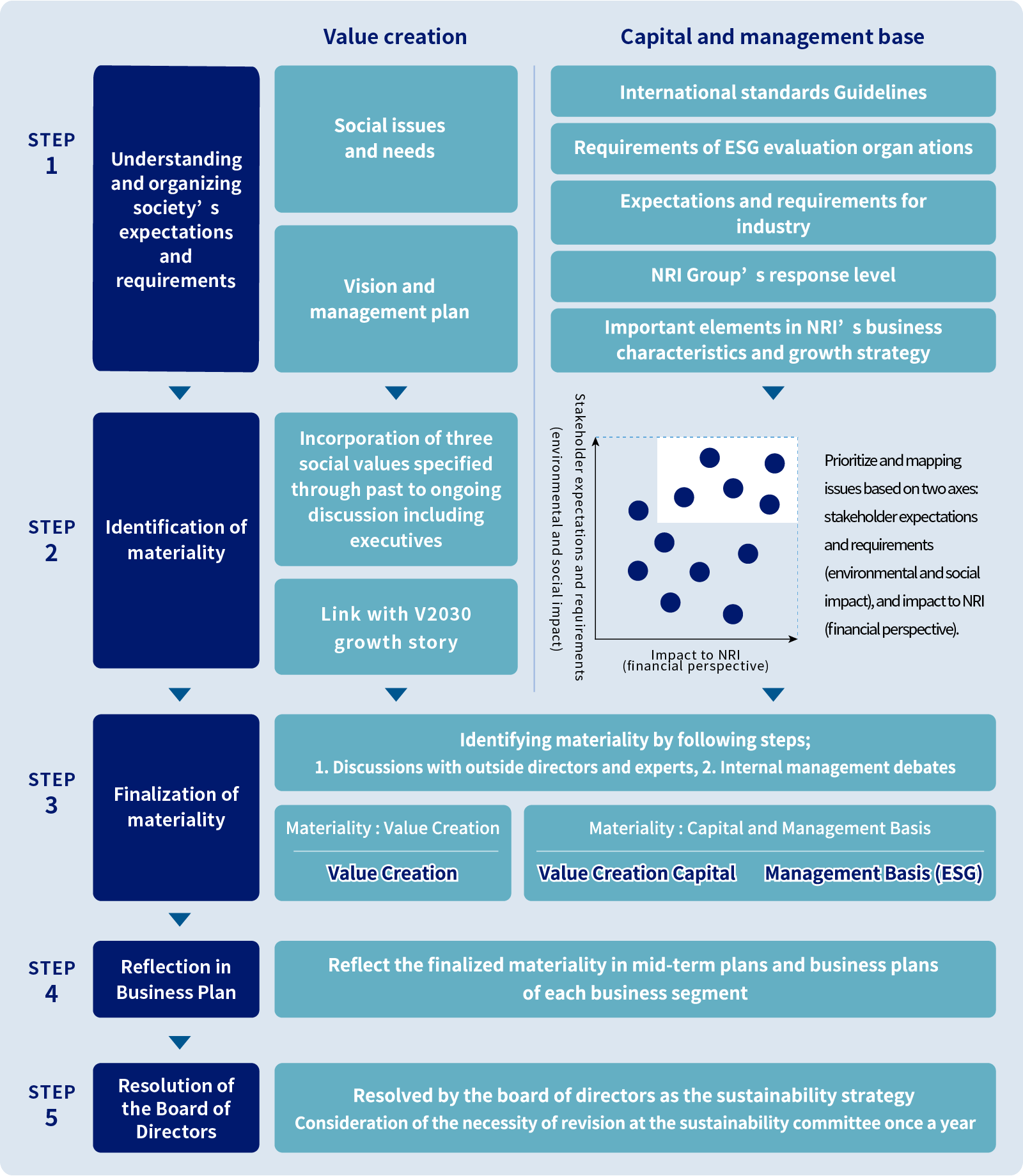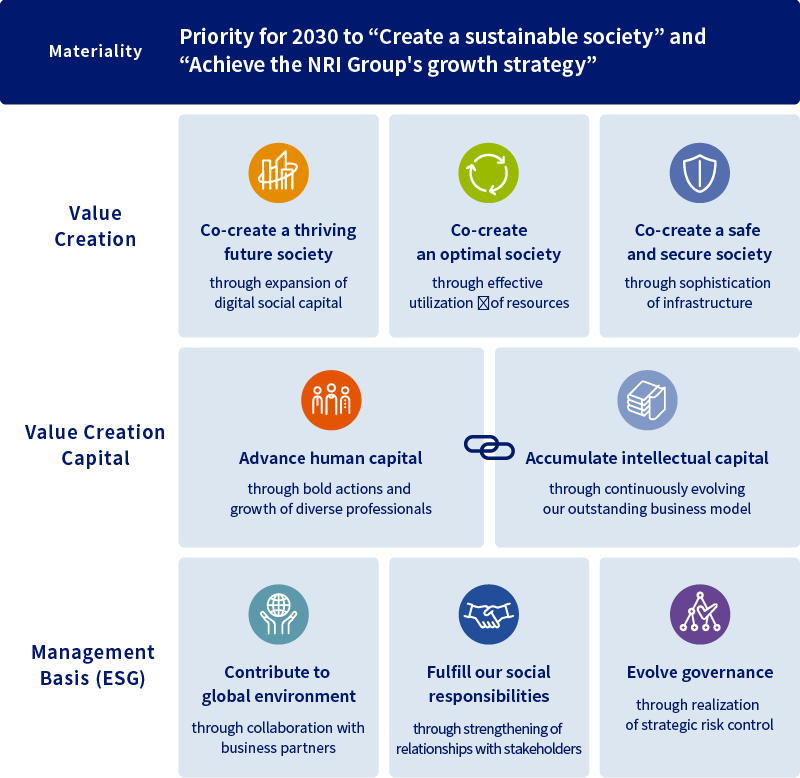Identification of materiality
We identified NRI’s materiality (key issues) from a management perspective and the perspective of external stakeholders by referring to international standards and guidelines, requirements from ESG evaluation organizations, consistency with corporate philosophy and growth strategy, and opinions of outside directors and experts.
In formulating our long-term management vision "NRI Group Vision 2030" (V2030), we have reidentified our materiality based on expectations and requests from our stakeholders (impact on the environment and society) and concepts such as double-materiality, in addition to the financial impact on the NRI Group. In light of changes in the social environment and the NRI Group’s evolving business landscape, we identified key priority themes for 2030. For each theme, we assessed material issues by examining potential risks and opportunities over the short to long term.
When identifying the materiality issues, we debate with external directors and experts and hold management discussions (STEP 3 in the figure below). In March 2023, the Board of Directors approved this materiality as part of our Basic Sustainability Policy (STEP 5 in the figure below).
Based on these results, the Sustainability Committee considers the need to review our materiality analysis on an annual basis.
1. Identification process of materiality

2. Materiality
The eight materiality issues made up of three tiers of “value created,” “capital generating value” and “management base (ESG)” are positioned as key elements in the formulation of business strategy and the management decision-making process.

Value Creation
Creating a sustainable future society
※For more information about value co-creation,please click here
| 2030 Goals | Major Initiatives | KPI | FY 2025 Targets | FY 2023 Results | |
|---|---|---|---|---|---|
|
Co-create a thriving future society through expansion of digital social capital |
Derive value from excellent human capital and intellectual capital to expand digital social capital |
|
|
¥63.0 billion*1 |
¥15.1 billion |
|
Co-create an Optimal Society through effective utilization of its resources |
Effectively utilize resources (such as human resources, public assets, IP) and recycle natural resources through the use of business PF and data analytics |
|
|
¥141.0 billion |
¥137.4 billion |
|
through sophistication of infrastructure
Co-create a safe and secure society |
Provide highly advanced IT infrastructure to protect social infrastructure and data from disasters and cyber risks |
|
|
¥216.0 billion |
¥185.5 billion |
- ※1Cumulative values during the term of MTP2025
- ※2Direct to Consumer
Value Creation Capital
Human and intellectual capital are the source of value creation
| 2030 Goals | Major Initiatives | KPI | FY 2025 Targets | FY 2023 Results | |
|---|---|---|---|---|---|
|
Advance human capital through bold actions and growth of diverse professionals |
Create a workplace where highly skilled professionals with diverse values gather to grow |
|
|
|
|
|
Accumulate intellectual capital through continuously evolving our outstanding business model |
Continuously evolving of the source of our competitiveness (such as business model, brand, and capability) |
|
|
¥41.0 billion*4 |
¥14.1 billion |
- ※3Percentage of women responsible for projects and businesses
- ※4Cumulative values during the term of MTP2025
Management Basis (ESG)
Extending ESG to the supply chain
| 2030 Goals | Major Initiatives | KPI | FY 2025 Targets | FY 2023 Results | |
|---|---|---|---|---|---|
|
Contribute to global environment through collaboration with business partners |
In collaboration with business partners with Scope 3 vision, create a sustainable environment globally and conserve natural capital while promoting more sophisticated use of renewable energies |
|
|
FY2030 Targets
|
|
|
Fulfill our social responsibilities through strengthening of relationships with stakeholders |
Fulfill social responsibilities in the entire supply chain, such as good relationships with stakeholders, creating a healthy workplace, and commitment to human rights |
|
|
Domestic Group 90% |
Domestic Group 80% |
|
Evolve governance through realization of strategic risk control |
Strive for balanced governance, including strategic risk-taking, to control risks with long-term perspective |
|
|
0 |
5 |
- ※5Calculated based on a simplified calculation method in accordance with the Ministry of the Environment’s guidelines. Actual reduction effects are not reflected in the calculation figures (a review of the calculation method is currently under consideration).
- ※6Neutralization of residual emissions
- ※7Including environment, human rights, etc.
- ※8Consenters or holders of equivalent standards in NRI Group’s procurement partner companies, such as system development contractors